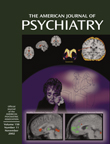This short autobiography of the pioneer neurophysiologist and electroencephalographer Wladimir Liberson has two major points of interest. The first is the fascinating description of the early years of his life as a student and scientist in Czarist Russia and then during World War I and the Bolshevik Revolution. As a young physiologist in Kiev and later in St. Petersburg/Leningrad, he studied under some of the great Russian physiologists, including Pavlov, whom he described as a “sublime lecturer who spoke in simple terms.” Later, he even worked in Pavlov’s laboratory. This autobiography conveys the scientific and political excitement of those dramatic, often perilous times. Liberson escaped and made his way to Paris in 1924; there he continued as a student and researcher at the Sorbonne and the famous Salpêtrière. During the 1920s, he worked with eminent French teachers and investigators, including Janet and some who had been with Claude Bernard.
The second major point of interest is a brief review of some of Liberson’s numerous research achievements, many of which have definite clinical applicability. He was the first clinical electroencephalographer in France, but being Jewish meant that he had to leave France in 1940 at the beginning of the Nazi occupation. Thus, he was forced to flee from his home and his work for the second time in his life. He came to the United States, where he was a clinical and research electroencephalographer at Mt. Sinai Hospital in New York and then for almost 20 years at the Institute for Living in Hartford, Conn. He spent the next 12 years in Chicago, where he continued his research at the Hines Veterans Administration Hospital. He then divided his time among consultantships and teaching positions in Miami, Brooklyn, Norfolk, and New York; he worked until almost the end of his life at age 94.
Liberson was dedicated to improving the well-being of patients with neurological and/or psychiatric illnesses and directed much of his research efforts toward the clinical application of his laboratory findings. For example, he foresaw many uses for functional electrical stimulation and was the first to use it to enable paraplegic patients to walk. In addition, he introduced functional EEG and developed standard techniques for electric shock treatments. In his last years he strove to improve functional electrical stimulation because he believed it had immense, untapped clinical applicability.
During his long career, Liberson made substantial contributions to psychopharmacology, biological psychiatry, and rehabilitation medicine as well as to neurophysiology and clinical neurology. He wrote the Annual Review of EEG for the American Journal of Psychiatry for 15 years. He co-founded the first EEG society in the United States and served as its president as well as president of associated scientific societies. His achievements were recognized in that he was given the Gold Key Award in 1967 from the Congress of Physical Medicine and Rehabilitation and the Krusen Award, the highest honor of the Academy of Physical Medicine and Rehabilitation, in 1987.
Wladimir Liberson was a twentieth-century Renaissance man. In addition to his many scientific and clinical achievements, he was a distinguished translator of both Russian and French scientific and literary works. For example, each chapter in this book is headed by a two- to four-line quotation from his poetic translation of Pushkin’s masterpiece, Eugene Onegin.
This autobiography of a remarkable scientist and humanist will be especially worthwhile reading for those interested in the variable and sometimes tragic medical and political history of the last century and for those interested in neurophysiology and neuropathology. After reading it, I was stirred by the recall of the century’s brilliant developments and often painful events. I also realized that I had obtained a well-needed brief review of the neurosciences.

